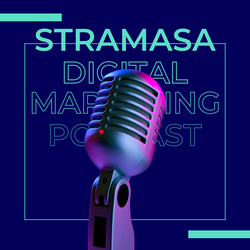If your fabrication business is the one in your competitive space to adopt a digital model for your go-to-market strategy, you become the disruptor, and you become the winner whose business grows and gains market share.
When a manufacturer thinks about digital disruption, it probably considers the Internet of Things, automation, or how production and distribution are changing. Although these aspects are important, I submit that the single most important, and potentially most powerful, digital transformation is with your marketing strategy
What Is Steel Marketing, Really?
First, let’s take a step back to answer a more basic question: What is marketing? Again, it’s not just about making eye-catching brochures and websites. It goes deeper.
Marketing reinforces the value proposition—that is, why customers buy from you and not your competitors—and enables the sales team to be more effective as prospects move to the final buying decision.
Marketing builds a company’s credibility, reliability, reputation, and trust. Put another way, marketing shapes how customers and prospects (the target audience) perceive the company. It does this not just through fancy fonts and photography, but by addressing the audience’s pain points.
Although most custom fab shops don’t have an entire department devoted to marketing, an element of marketing has always existed in this industry. Many shops were founded on work gained from that one-on-one, live human contact. It was—and still is, in many respects—very much a handshake business, with reputations built through word-of-mouth.
In this sense, such word-of-mouth communication is like marketing. People in the area talk about a certain fab shop, the fact it has stellar on-time delivery and quality, and about how the fabricator bends over backward for its clients. Like marketing, the word-of-mouth communication builds the company’s credibility, reputation, and trust in the market. That gives the fab shop’s CEO or salesperson wind in his sails as he visits prospective customers.
Of course, unlike marketing, word-of-mouth communication isn’t shaped directly by the fab shop. And, rightly or wrongly, it can destroy a shop’s reputation just as easily as it can build it.
Prospective customers now have access to more information than ever. If a purchasing agent needs to find a new custom fabrication supplier, he need not rely only on a Rolodex of business cards. He now can search for fabricators in the area on the Internet and thoroughly research his options before ever picking up the phone. In the digital age, fabricators need to create awareness, build relationships, develop credibility, and build trust, all before the salesperson gets a call.
This is where high-engagement digital marketing plays a critical role. Digital marketing is more than just websites, social media, emails, and banner ads. These are mere activities that happen to exploit digital technology. The disruption and the opportunity with digital marketing lies in meaningful and broad engagement with the people in your target audience.
I call this “The New Way to Market for Manufacturing.” Going forward, I’ll refer to it simply as the New Way.
Start Educating on Metal Fabrication & Engineering
The fundamental idea behind the New Way is to stop pitching services and start sharing expertise. When you stop pitching your fabricating services, awareness increases dramatically and you create a perception of credibility at the top of the proverbial sales funnel.
Most manufacturers are trying to engage and gain awareness by sharing company information: machines, facility size, and so on. This is like asking someone to marry you on the first date. It doesn’t work. First, you need to share expertise, educate, provide knowledge, and show how you can solve problems. Pitch your fabrication services when they are ready to buy.
Customers and prospects want to buy like it’s 2016. They use the Internet to qualify potential vendors well before they contact them. At least, that’s what they would prefer, but they often can’t. Manufacturers typically force people to talk with a salesperson if they want information beyond certain specifications or machine capabilities.
If you don’t believe it, take a look at your competitors’ websites, and while you’re at it, take a look at your own. Is there any information on your site beyond a description of your company and its fabricating capabilities? Are there webinars? A blog or e-newsletter that is not about the company? An educational resource center? Most likely, you won’t find one in a hundred fabrication companies sharing this type of content. But again, webinars, blogs, and other marketing vehicles are only as good as their content, which in turn is only as good as how well it addresses the pain points of your target audience.
Importance of the Marketing Function
Most manufacturers consider the marketing function as a service provider to the sales and management team. But the truth is, the marketing function can no longer be relegated to the back rooms where they set up tradeshows, place print ads, and make brochures for the sales and product teams.
The marketing team needs to be fully engaged and empowered to effect business goals, and marketing needs to be on the same level as sales and other front-office functions.
Marketing and sales serve separate purposes within a broader revenue-generation team, where their roles are equally important. It is the job of a modern marketing team to gain awareness and create a perception of credibility, trust, and reliability within the minds of the people in the target audience.
What is the New Way to Market?
Marketing has both strategic and tactical components. Manufacturers typically relegate the tactical functions to a marketing team and address the strategic components to the leadership or sales team. The typical outcome with this arrangement is an irrational marketing strategy: basically a sales plan backed up with a series of tradeshows and perhaps some social media.
The New Way marketing function must include a leader who understands business, marketing as a practice, sales, marketing technology, and how to establish deep understanding of a target audience. Other components include a proper, vetted, written marketing plan aligned to the business goals. It should offer targeted prospects and customers useful information when they want it, where they want it, and how they want it.
How Metal Fabrication Marketing works
Think about the way you make a significant purchase in your own personal life. The first thing we all do is educate ourselves on the web. Most of us do not contact a vendor immediately when we have a need. For some of us, the last thing we want to do, and the last step we take, before making a considered purchase is to engage with a salesperson.
This is exactly how your prospects act. The winners of market share will be those who engage with prospects effectively when those prospects are learning and, in essence, becoming an educated buyer.
Consider this scenario. One fabricator in your competitive space has developed content that is useful to the people in the target audience; it is not simply about the fabrication services it provides. We’ll call this fabricator Company A.
To get here, the marketing department at Company A has worked with sales and shop leaders to identify the target audience’s pain points, including the most prominent: late deliveries. Company A’s delivery happens to be world-class, a standout among its competitors. How can Company A market this effectively?
It starts by asking questions. Why exactly can’t competing shops meet due dates? After all, the marketing team at Company A knows that they do business in a competitive region for fabricators. After the dot-com bust and the Great Recession, the remaining custom fabricators in the area tout their latest-and-greatest machinery. And yet they hear from customers that these fabricators still deliver a number of jobs past the due date.
This leaves another reason for late deliveries: lack of communication. Many purchasing managers and engineers at various customers have retired in recent years, and their knowledge and experience have left with them. This includes the basics of sheet metal fabrication, and it also includes inventory options and the basics of securing a reliable delivery schedule, through kanban replenishment programs and the like.
With this pain point identified, the marketing team at Company A gets to work. Collaborating with sales and company leadership, the team develops (among other things) a website unique among the shop’s competitors.
Then along comes a prospect who ultimately will buy the service Company A or one of its competitors offers. The prospect has identified a need because they have a problem that is costing them time and money. It’s the problem the marketing team at Company A already knows about: The area’s fabricated part suppliers aren’t very reliable when it comes to on-time delivery.
The first thing prospects do is to search for an answer to their problem via an Internet search engine. Here’s the first thing they notice: All the custom fabricators in the area look very much alike. They all have websites that describe the services they offer: laser cutting, punching, press brake bending, and the like. But those really don’t address the prospect’s problem, so they bounce off those pages immediately.
Then the prospect finds Company A’s site. It doesn’t have a listing of capabilities or photos of welding arcs and laser beams, like so many other websites. And it also doesn’t say “We deliver quality parts on time, every time.” This again really doesn’t solve the problem; it just pitches a service, one that the prospect probably doesn’t believe anyway—at least not yet.
But the website does have an archived webinar posted. The prospect clicks on it, and within a few seconds he knows he’s dealing with what seems to be a different kind of operation. The webinar details the basics of kanban replenishment and other elements of lean manufacturing; how part families can be redesigned so that they can be partially built and inventoried, then pulled from stock, customized to order, and quickly delivered.
The site also has a video showing a 3-D animation of various fabrication processes, including laser cutting and press brake bending, giving the basics of how each process works, and basic tips about which kinds of sheet metal designs work and which don’t.
The webinars and videos on the site do not pitch the prospect; they educate. They also don’t judge. They simply describe certain part flow and fabrication methods. They describe how the methods work, but they don’t say they are better or worse than any other.
The site also has a helpful white paper and an archived webinar that directly addresses delivery problems. The prospect clicks on the useful information and finds himself at a highly relevant webpage where he can get even more useful information, which he then forwards on to his engineering department. The prospect downloads the information and bookmarks the page.
After a few days or weeks spent reviewing the information and several more visits to Company A’s website, they are ready to make the purchase. They have identified five custom fabricators that offer similar services, and they may even solicit bids from all five—but it’s too late for the other four companies, because all they have to rely on is a low price or a really good salesperson.
The four other fabricators end up racing to the bottom of the profit margin bucket, hoping that no other company will offer a lower price. But neither low price nor a super salesperson is enough for any of them to win the business.
That’s because the prospect has already developed a relationship with Company A, without ever talking to a salesperson. Company A has credibility leading to a perception of reliability. The prospect wants to reciprocate with Company A in appreciation for all the help in solving his problem. The result: Company A will get the business—even at a higher price.
How to Get Started with Metal fabrication Marketing
The first step is to acknowledge that marketing is integral to your business. This can be a big culture change in most manufacturing companies. Peter Drucker famously stated, “Culture eats strategy for breakfast,” meaning that any change to a company culture is very difficult and takes a lot more than just a new strategy. In most cases, the change must be incremental and should be introduced by demonstrating the power of the concept one step at a time, not as a complete revision.First, stop pitching fabrication services and start sharing expertise. Nearly all manufacturing companies have a hard time believing that they should not be leading with “the specs”—that is, the features and benefits of this laser cutting machine or that press brake on their shop floor.
Before you shake your head and move on to the next article, consider the earlier scenario. You cannot gain credibility by pitching the features and benefits of a product or service. You gain credibility by giving prospects something that matters to them. They may not care about what metal fabrication technology your company has. They care about WIIFM (what’s in it for me); that is, they care about what you and your company can do for them. This is a subtle but incredibly important difference.
To get started, first write a proper marketing plan, one that starts not with your company’s capabilities, but what customers really need.
You also need to gain the support and approval of company leadership to prove that good, focused marketing can help grow the business. You’re not going to change everything all at once, and you shouldn’t present it that way. Pre-sent the idea as a pilot or test program to prove the concept.
Next, figure out a topic of interest that matters to your audience. To market effectively to a prospect, you need to find the sweet spot, where the prospect’s pain points and your company’s expertise intersect. Hint: Do not describe a particular product or service.
Then prepare a pilot program built around the topic you select. The program may include webinars, email newsletters, or similar educational content. Regardless of the platform, it should be able to show meaningful numbers, collect contact information, and identify sales leads. After you launch the pilot program, share the results, and ask for permission and resources to expand the concept.
Leadership and stakeholders must collaborate and agree on the strategic marketing fundamentals. This includes defining your target market, understanding its needs, and determining a positioning statement and value proposition that address those needs. All of this needs to be part of your initial marketing plan.
Metal Fabrication Marketing Investors Will Win
Let’s be clear, this strategy may not replace all of your existing marketing activities completely, but it should be your leading strategy for engagement and growth. One thing is for sure: This strategy is very rare, almost nonexistent, in metal fabrication.
Let us also be clear on a second point: It isn’t easy to build awareness and credibility in a marketplace by sharing expertise. It takes persistent, consistent marketing activity, and it takes time.
If you become Company A, your competition eventually will catch on and try to copy your success. The first movers have two to three years (barring copyrights and patents) before the fabrication market space playing field is once again level. You must be the first or second mover in your competitive space and stick with it for a couple of years to really gain an advantage. The first movers will win and the laggards will either stagnate or disappear—as have 52 percent of FORTUNE 500 companies.
Get in touch
Got a project or do you have any questions for us?
Let’s have a virtual coffee and talk about your challenge.
We are a full-service agency offering strategic marketing services
Request An Introduction Meeting
Book A Consultation
Ready to grow your business together? Let’s connect!
Contact & Availability
Email: info@stramasa.com
Monday to Friday: 9:00 AM to 10:00 PM
Saturday: 9:00 AM to 5:00 PM
Sunday: 9:00 AM to 5:00 PM
Let’s Connect
Our expertise makes the difference

Our international offices & local teams
NA – United States (USA) – New York (NYC), Miami, Orlando, Florida, Denver, San Diego, Chicago, Houston, Austin, Texas, Boston, Los Angeles, Washington, Seattle, Philadelphia, Portland, Ohio, Minneapolis, New Jersey, Cleveland, Columbus, Richmond, Indianapolis, Phoenix, Arizona | Canada – Toronto, Vancouver, Montreal, Calgary, Edmonton, Ottawa EMEA – Europe – Brussels – Belgium, London, Manchester, Dublin, Brisbane, Bristol, Newcastle – UK | Glasgow, Scotland | Ireland | Dubai – U.A.E. |Turkey | Berlin, Hamburg Germany | Amsterdam, The Netherlands, Barcelona Spain, Rome, Italy | Beijing, Chennai, China APAC & ASEAN – Manila – Makati – Philippines | Osaka, Tokyo, Kyoto – Japan | India – Mumbai, Delhi, Bangalore | Singapore | Bali, Jakarta, Indonesia | Kuwait | Pakistan | Jeddah, Saudi Arabia | Hong Kong | Thailand | Australia – Melbourne, Sydney LATAM – Brazil














